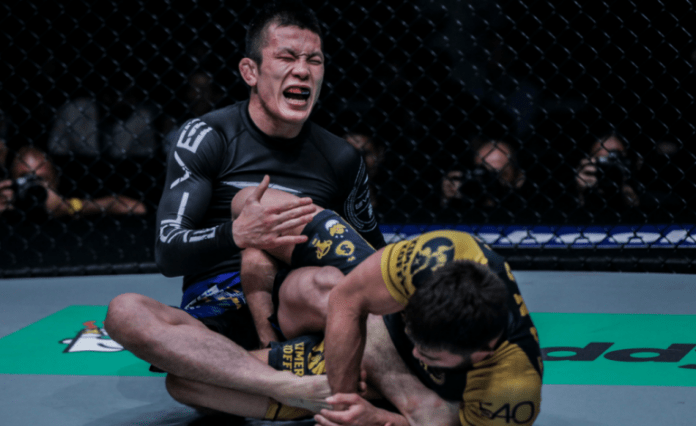
What’s the best way to win a BJJ match? Come on, this one is easy. A submission that leads to a tap, of course. Yet somehow, there’s nothing more difficult to accomplish in all of grappling martial arts than pulling off a submission hold on a resisting opponent. The thing with submissions is that they’re really tricky. Some of them work only if certain positions are inch-perfect, while others can be as surprising as thunder from clear skies. And the trickiest of the bunch are the submissions you can actually pull off while competing. Iн that sense, there are certain grappling submissions that have proven over the decades as more reliable than anything else. Knowing which they are, and spending time perfecting them all but guarantees you’re going to get taps in tournaments. Lots of them.
It is often said that what you do in training defines how well you perform in a tournament. This is partly true. The fact of the matter is that you have to train in order to acquire enough knowledge to participate in a competitive event. However, with Jiu-Jitsu, what you can pull off in training and what you can pull off in competition can be worlds apart. That simple little change of setting brings about crazy amounts of adrenaline, and adrenaline makes you do stuff without thinking. Conversely, the percentage of grappling submissions pulled off in either BJJ, MMA or any other combat sport is quite lower compared to the same percentage in training. The reason is simple – some submissions are just better than others when it comes to pulling them off in tournaments.
The Art Of Submission Hunting
There’s nothing as rewarding as getting a tap from a submission. The first time you get a submission in BJJ is the moment you really get hooked to the art. From there on it just gets more fun, mostly because it becomes even harder to get submissions. And, when you get that perfect one, when your positioning is on point, the opponent can’t move, and you have all control before you finish slowly and at will, BJJ starts making sense. You get the tap, you slap ‘n’ bump and with the same partner, you might not hit that same submission again for months.
Let’s face the truth – submission hunting is the toughest part of Brazilian Jiu-Jitsu. Of course, it is what everyone wants. As someone who made it the only goal for years, trust me, it takes a lot of work to become a submission hunter. And the first step is to be ready to fail. A lot. In fact, you need to be ready to fail even more than you did with pins, sweeps, takedowns and other aspects of Jiu-Jitsu. Grappling submissions are an art form of itself but are a skill everyone can learn.
What you’ll start realizing after a while is that you can pull off a submission against virtually anyone you come up against. Of course, the goal is to do it on your own term, but, most often than not, you’ll need a bit of luck as well. That said, you’ll also realize that despite having your favorite moves and an “A” game, it won’t always work. In fact, it works less the more you do it to people. In a submission hunting sense, that means certain submissions will universally work better than others. There’s a myriad of reasons why that’s the case, but for now, all that’s important is to figure out which grappling submissions are the highest percentage ones for competitors. The “why” and “how” will come later.
A Few Proven Classics Grappling Submissions
Black belts say it over and over again: “Focus on basics” and “fundamentals work against anyone”. White belts nod not understanding anything, blue belts say yes an try and do complicate stuff anyway, while purple belts just stare blankly, given that they already know everything and can’t wait for rolling to begin. And yet, when people get to brown/black, they realize that all of that was true. So far, I haven’t found a way to break this cycle and try and get people to listen from the early days. Experiments are ongoing, though.
When it comes to puling of grappling submissions, two key criteria determine your success. The first is how complex the move is from a mechanical standpoint. The second is whether or not you can see it up from multiple positions. If a move ticks both boxes, you can assume it will work in competition, even against higher-level guys. After a good period of polishing the during rolling, of course.
- MOVE: Cross Collar Choke
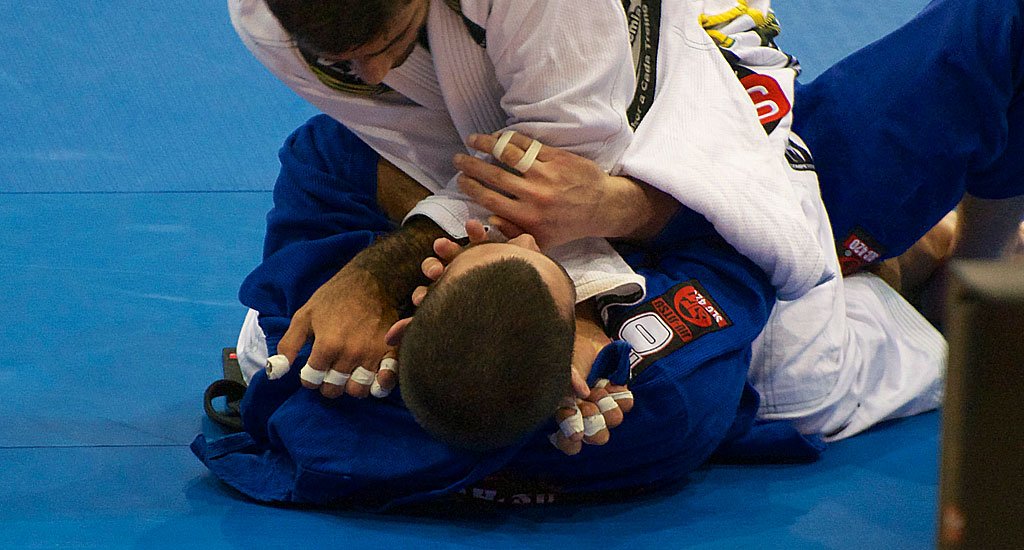
-
WHY IT WORKS
This choke is extremely powerful because it is extremely easy to get, and comes in a few different variations. Plus, it is available from both the closed guard and the mount. In both cases, it is your entire body, as opposed to your arms that is behind the choke, which means defenses are futile when you have the mechanics right. It is one of the highest percentage chokes in BJJ tournaments of all time.
-
KEY DETAILS
Have some slack! The deeper you go for a grip on the collar, the looser the choke will become. Instead, try and keep your wrist at collar bone level, as a general guideline. Form there, everything will align perfectly.
-
MOVE: Straight Armbar
No other move screams “grappling submissions” as the armbar does. Just about any grappling amrita part has a version of this move, which in itself is proof enough of how effective it can be. The armbar mechanics are easy – use your hips to put pressure on the elbow of an arm, in a direction opposite to that of the arm’s natural bend. The move can be done from a bunch of different positions, and even from scrambles.
-
WHY IT WORKS
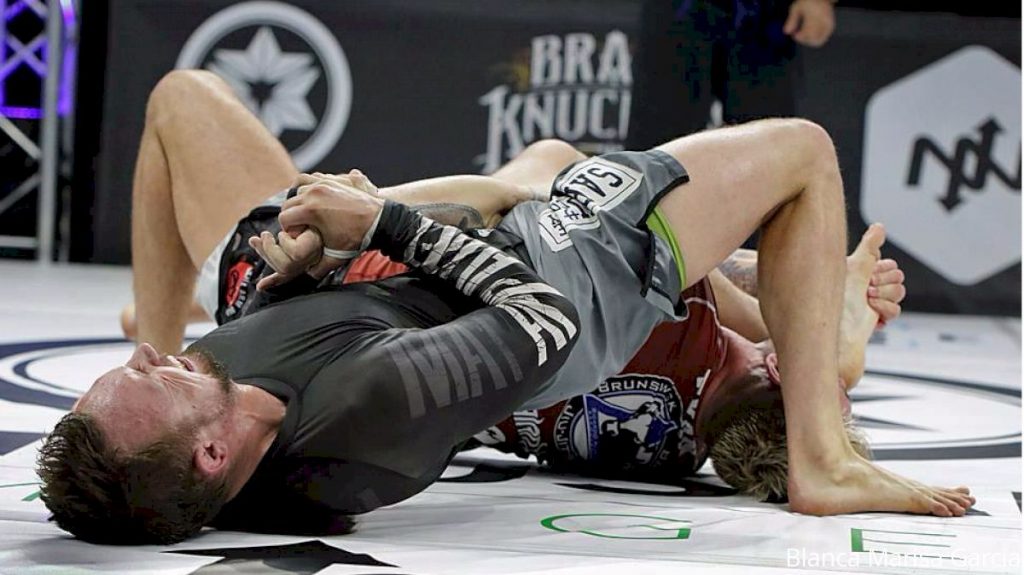
-
KEY DETAILS
Follow the pinky finger. Forget all about getting g the thumb pointing to the ceiling. It is the pinky finger that’s aligned with the elbow. If you have the pinky finger glued to your chest, you’ll have elbow breaking pressure too.
-
MOVE: Bow And Arrow Choke
A real classic when it comes to Gi Jiu-Jitsu. In fact, Danaher himself calls this choke the most powerful choke in existence. It works form the back, to begin with, which means you’re attacking from the best position BJJ has to offer. The move employs the use of the collar again, but this time, in a much more brutal fashion than the Collar Choke. The position has you hooking one arm of the opponent with one leg while holding their opposite side leg with a pants grip. In other words, there’s no way to go, and that’s before you even begin choking.
-
WHY IT WORKS
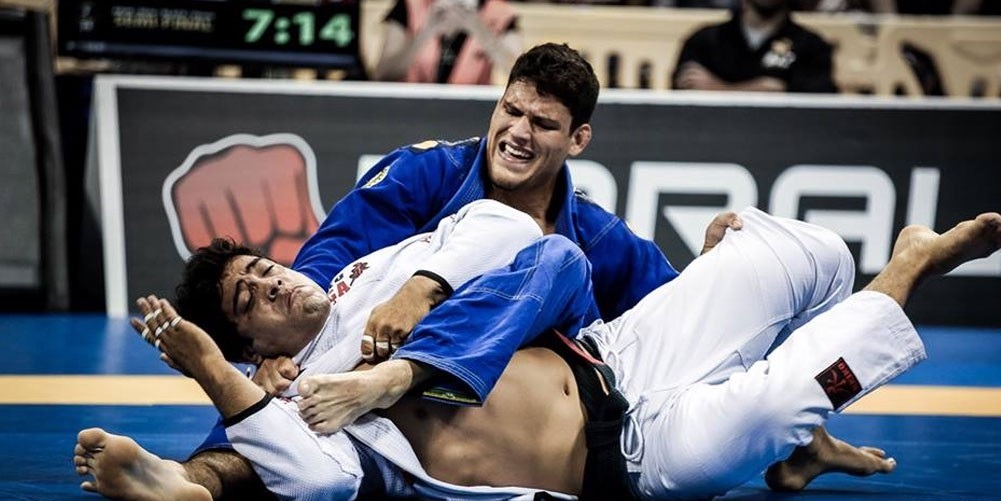
-
KEY DETAILS
Keep your elbow (of the choking arm) close to your ribs. Many people let it flare when they lay back for the finish, and this can open up a small but significant window for escapes. Keep it glued to your ribcage for maximum effect.
-
MOVE: Triangle Choke
The triangle choke is the poster submission of BJJ. Given that you’re using you’re your legs to strangle someone, it is also extremely fun to learn and get taps with. IN essence, you’re on your back, one leg under the armpit of an opponent, and the other over their opposite side shoulder. The legs go in a triangle structure and you pull down on the head and squeeze. Extremely effective and offers plenty of sneaky entry opportunities.
-
WHY IT WORKS
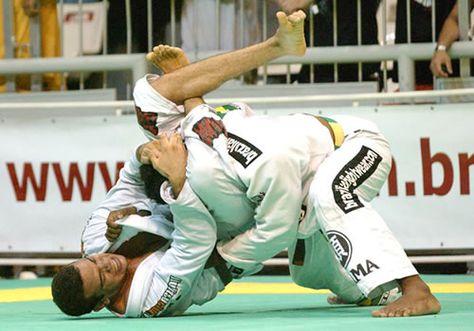
-
KEY DETAILS
One thing we’ve always been taught is to pull the head towards the crotch in a triangle choke. The trick is pulling, yes, but not straight down. Instead, pull towards the thigh of the leg that’s over the shoulder of the opponent. This will place immense pressure on the carotid artery on that side.
-
MOVE: Kneebar
The kneebar is pretty much an armbar done on a leg instead of an arm. The name says it all, really. The mechanics are pretty similar, and given that it is a straight limb submission, percentages are expectedly high. The only drawback is you have to wait until you’re a brown belt to pull it off in competition. Well, at least under the most popular rule sets out there, anyway. That said, it is a great tool to add to your grappling submissions arsenal early on so that it is polished and ready to use when the time comes.
-
WHY IT WORKS
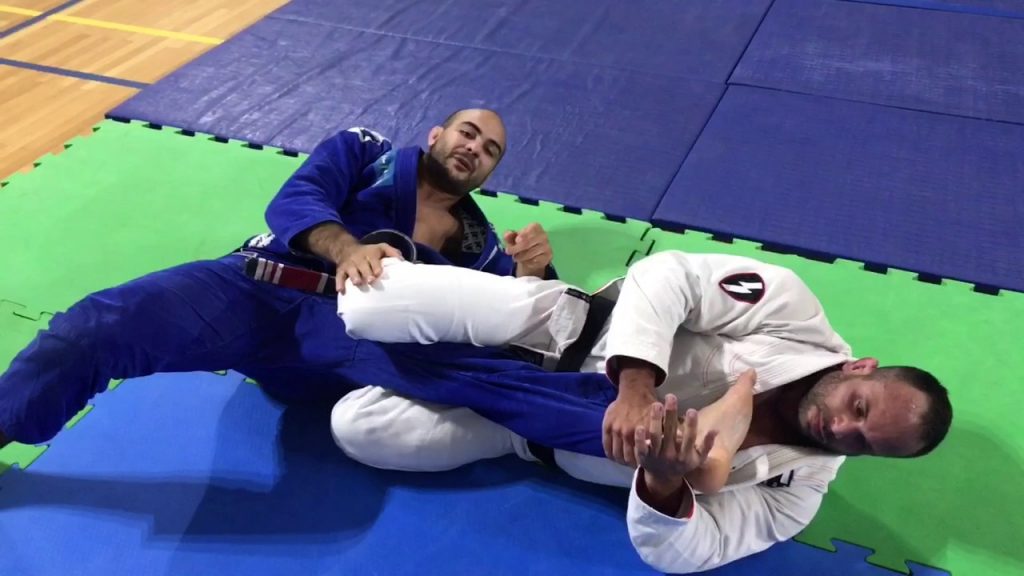
-
KEY DETAILS
Twist. All twisting locks are much more powerful compared to straight locks. You still need to push with the hips and pull with your upper body. However, introduce an upper-body twist as well to really get torque on that knee joint.
-
MOVE: Arm Triangle
This si amove many people shun in the Gi. That’s a shame because statistics show that it works amazingly well in both Gin ad No-Gi, at all possible levels. It is quite an easy move to get – you do a triangle with your arms instead of your legs. Conversely, you do this one from the top. You can set it up from mount, back, side control or half guard. Basically, you simply hug your opponent, trapping one arm in the process (on the near side). Lying alongside your opponent will have you just a palm-to-palm grip away from a finish.
-
WHY IT WORKS
The arm triangle is powerful because you’re only connected to your opponent via the choke structure. This might sound like a bad thing but it really isn’t. You, laying there on the ground has gravity helping you stay in place. The fact that there’s no body-to-body connection makes it impossible for your opponent to escape because there’sno connection or leverage to find.
-
KEY DETAILS
Don’ try to choke with your neck. That’s a great way of messing up your neck muscles or even choking yourself. Instead, after you sink in the arm triangle, lift your head and try to put pressure on their triceps with your collarbone. As a bonus hint, bend both your legs at the knees, soles of the feet pointing to the ceiling. You’ll get unbelievable finishing pressure from that alone.
Prison Rules Submission Holds
What happens when you decide to sign-up for one of these brand new, submission only, crazy or no rules tournaments? Well, as long as it is with a Gi, anything we talked about before still applies The fundamental grappling submissions are so effective because they’re simple to use and master. without the Gi, though, you end up a few moves short, namely the Bow and Arrow and Cross Collar Choke. So, let’s look at a few replacements, as well as a few moves that are not generally allowed.
Speaking of replacements, the best bet is to switch up collar chokes with front headlock chokes. The guillotine and D’arce choke are particularly high-percentage here and can work from a bunch of different positions. Keynotes in both are to try and get the chin of the opponent towards their chest as you do all other choking mechanics. That introduces a compression component making everything tighter. On the subject of chokes, there’s no way we can skip over the rear-naked choke as well. The reason we place ti here is that the Gi often times can get in the way of both the RNC and the front headlock chokes. That’s why they’re much higher percentage moves without the Gi. Of course, the heel hook is one of the top grappling submissions to get when you’re competing by “prison rules’.
Heel hooks work against anyone, regardless of level, strength, flexibility and all that. However, there’s a catch – you need more than solid positioning in order to really be able to get all the leverage you need to blow peoples’ knees out. Place the toes in the crook of your elbow rather than under your armpit for insane amounts of leverage.
Oh, and consider giving calf slicers a try as well. Just for laughs.
Discovering The Next Big Thing(s)
All these submissions work because they’re fundamental, and have been polished and worked on by all kinds of black belts for decades. However, at a certain point in time, they were new as well. If we want to evolve BJJ, we have to introduce grappling submissions that will one day work with a very high percentage rate. That means, we have to keep experimenting with moves that show promise, but might not just be there yet.

The Tarikoplata is another move that’s a hybrid of recycled old stuff (from catch wrestling I think) and the innovative approach of Tarik Hopstock. It is a Kimura variation done with the legs, from a bunch of different positions and to great degrees of success. The only catch is, Tarik has molded it to himself, and now needs to find a way to make it accessible for everyone training Jiu-Jitsu.
Finally, there is more cath wrestling stuff that I think merit more attention. |Unfortunately, for BJJ people it is enough to just say “this is not legal” and they forget it exists. Rules change, and one day, these illegal moves might just end up being available to all. So, crotch rippers, AKA banana splits need to get more focused attention from people, as they’re extremely powerful and painful.
Last but not least, stuff like the inverted back mount and all associated cray subs are going to be the future for sure. Jum p on the bandwagon sooner rather than later.
Final Words
Submitting everyone in a tournament is bot the ultimate way of proving you’re the best, and the most practical way of getting the job done fast. However, if you truly want to be a submission artist, you need to up your game, particularly in training. That said, focus on the best grappling submissions that are proven to work. Build a great base of submission hunting with them, and so that you can then move on to more fun stuff that shows potential.


![Darce Choke Encyclopedia – Origins, Mechanics and Variations [2024] BJJ, choke, Brabo, BJJ Darce Choke, D'arce Choke, Darce BJJ Choke](https://bjj-world.com/wp-content/uploads/2017/11/JungPoirierLeeYahoo-218x150.jpg)









![Front Headlock and Turtle Escapes Brian Glick DVD Review [2024] Front Headlock and Turtle Escapes Brian Glick DVD Review](https://bjj-world.com/wp-content/uploads/2024/11/headlock-and-turtle-escapes-brian-glick-dvd-review-218x150.png)
![Basic Closed Guard Jasmine Rocha DVD Review [2024] Basic Closed Guard Jasmine Rocha DVD Review](https://bjj-world.com/wp-content/uploads/2024/11/basic-closed-guard-jasmine-rocha-dvd-review-218x150.png)
![Don’t Stand Up Chris Wojcik DVD Review [2024] Don't Stand Up Chris Wojcik DVD Review](https://bjj-world.com/wp-content/uploads/2024/11/dont-stand-up-chris-wojcik-dvd-review-218x150.png)
![EMU Guard 2.0 Benjamin Power DVD Review [2024] EMU Guard 2.0 Benjamin Power DVD Review](https://bjj-world.com/wp-content/uploads/2024/11/emu-guard-2-0-benjamin-power-dvd-review-218x150.png)
![The Whole Omoplata Enchilada Lyanne Perez DVD Review [2024] The Whole Omoplata Enchilada Lyanne Perez DVD Review](https://bjj-world.com/wp-content/uploads/2024/11/whole-omoplata-enchilada-lyanne-perez-dvd-review-218x150.png)
![No-Gi Defense Xande Ribeiro DVD Review [2024] No-Gi Defense Xande Ribeiro DVD Review](https://bjj-world.com/wp-content/uploads/2024/11/no-gi-defense-xande-ribeiro-dvd-review-218x150.png)
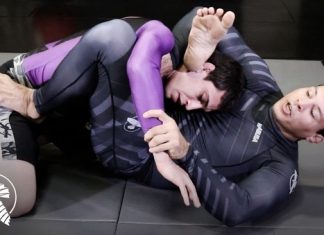






![Dubious De La Riva Dominique Bell DVD Review [2024] Dubious De La Riva Dominique Bell DVD Review](https://bjj-world.com/wp-content/uploads/2024/10/dubious-de-la-riva-dominique-bell-dvd-review-100x70.png)
![Jeff Glover Deep Half Revolution DVD Bundle Review [2024] Jeff Glover Deep Half Revolution DVD Bundle Review](https://bjj-world.com/wp-content/uploads/2024/10/jeff-glover-deep-half-revolution-dvd-bundle-review-100x70.png)
![Intro To Hip Mobility for Guard Players Joshua Presley DVD Review [2024] Intro To Hip Mobility for Guard Players Joshua Presley DVD Review](https://bjj-world.com/wp-content/uploads/2024/09/hip-mobility-for-guard-joshua-presley-dvd-review-100x70.png)


![Just Pass Jay Rodriguez DVD Review [2024] Just Pass Jay Rodriguez DVD Review](https://bjj-world.com/wp-content/uploads/2024/11/just-pass-jay-rodriguez-dvd-review-100x70.png)


![Countering Triangles And Omoplatas Adam Mazin DVD Review [2024] Countering Triangles And Omoplatas Adam Mazin DVD Review](https://bjj-world.com/wp-content/uploads/2024/10/countering-triangles-and-omoplatas-adam-mazin-dvd-REVIEW-100x70.png)

![Darragh O’Conaill Crucifix Encyclopedia DVD Review [2024] Darragh O'Conaill Crucifix Encyclopedia DVD Review](https://bjj-world.com/wp-content/uploads/2024/10/darragh-oconaill-crucifix-encyclopedia-dvd-review-100x70.png)





![Compass Kneebar System Charles Harriott DVD Review [2024] Compass Kneebar System Charles Harriott DVD Review](https://bjj-world.com/wp-content/uploads/2024/11/compass-kneebar-system-charles-harriott-dvd-review-100x70.png)
![Eoghan O’Flanagan Bundle Down Right Sloppy Jiu-Jitsu Review [2024] Eoghan O'Flanagan Bundle Down Right Sloppy Jiu-Jitsu Review 2024](https://bjj-world.com/wp-content/uploads/2024/09/down-right-sloppy-jiu-jitsu-eoghan-oflanagan-bundle-100x70.png)
![Reverse De La Riva System Mikey Musumeci DVD Review [2024] Reverse De La Riva System Mikey Musumeci DVD Review](https://bjj-world.com/wp-content/uploads/2024/11/reverse-de-la-riva-system-mikey-musumeci-dvd-review-100x70.png)
